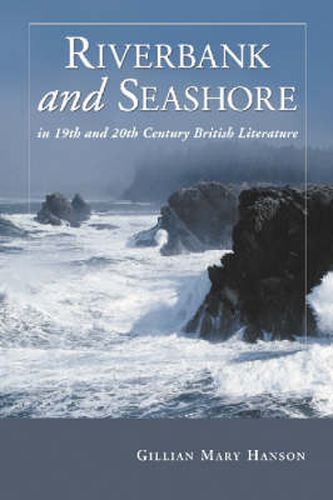Readings Newsletter
Become a Readings Member to make your shopping experience even easier.
Sign in or sign up for free!
You’re not far away from qualifying for FREE standard shipping within Australia
You’ve qualified for FREE standard shipping within Australia
The cart is loading…






This title is printed to order. This book may have been self-published. If so, we cannot guarantee the quality of the content. In the main most books will have gone through the editing process however some may not. We therefore suggest that you be aware of this before ordering this book. If in doubt check either the author or publisher’s details as we are unable to accept any returns unless they are faulty. Please contact us if you have any questions.
The waters of river and sea represent a kind of freedom, a liberty which, as Iris Murdoch writes, enables man
to exist sanely without fear and to perceive what is real.
As settings in fiction, the riverbank and seashore are rich in potential, offering a sense of destiny and suggesting the possibility of self-truth and self-knowledge. In British literature, the rural costal setting-shadowed by cliffs, tugged by the constant movement of the sea - becomes the site of revelation and generates the energy that brings characters to a new level of self-awareness. The river’s embankments, bridges and tunnels often mark specific stages of revelation and movement in plot. Entrapment and isolation, contingency and communication are themes that seem born of such settings. This book examines the ways in which 21 modern and postmodern writers (from Tennyson to Ted Hughes, from Jane Austen to Jane Gardam) have made use of the physical environment of riverbank and seashore in their work. It considers how each author employs the physical settings in the service of plot and character development, and how those settings are used to connect with some of the major intellectual concerns of the late 19th and 20th centuries. An appendix offers significant quotations from the texts under discussion, arranged according to the location they describe: the rural river, the urban river, river into sea, the rural shore, and the urban shore.
$9.00 standard shipping within Australia
FREE standard shipping within Australia for orders over $100.00
Express & International shipping calculated at checkout
This title is printed to order. This book may have been self-published. If so, we cannot guarantee the quality of the content. In the main most books will have gone through the editing process however some may not. We therefore suggest that you be aware of this before ordering this book. If in doubt check either the author or publisher’s details as we are unable to accept any returns unless they are faulty. Please contact us if you have any questions.
The waters of river and sea represent a kind of freedom, a liberty which, as Iris Murdoch writes, enables man
to exist sanely without fear and to perceive what is real.
As settings in fiction, the riverbank and seashore are rich in potential, offering a sense of destiny and suggesting the possibility of self-truth and self-knowledge. In British literature, the rural costal setting-shadowed by cliffs, tugged by the constant movement of the sea - becomes the site of revelation and generates the energy that brings characters to a new level of self-awareness. The river’s embankments, bridges and tunnels often mark specific stages of revelation and movement in plot. Entrapment and isolation, contingency and communication are themes that seem born of such settings. This book examines the ways in which 21 modern and postmodern writers (from Tennyson to Ted Hughes, from Jane Austen to Jane Gardam) have made use of the physical environment of riverbank and seashore in their work. It considers how each author employs the physical settings in the service of plot and character development, and how those settings are used to connect with some of the major intellectual concerns of the late 19th and 20th centuries. An appendix offers significant quotations from the texts under discussion, arranged according to the location they describe: the rural river, the urban river, river into sea, the rural shore, and the urban shore.